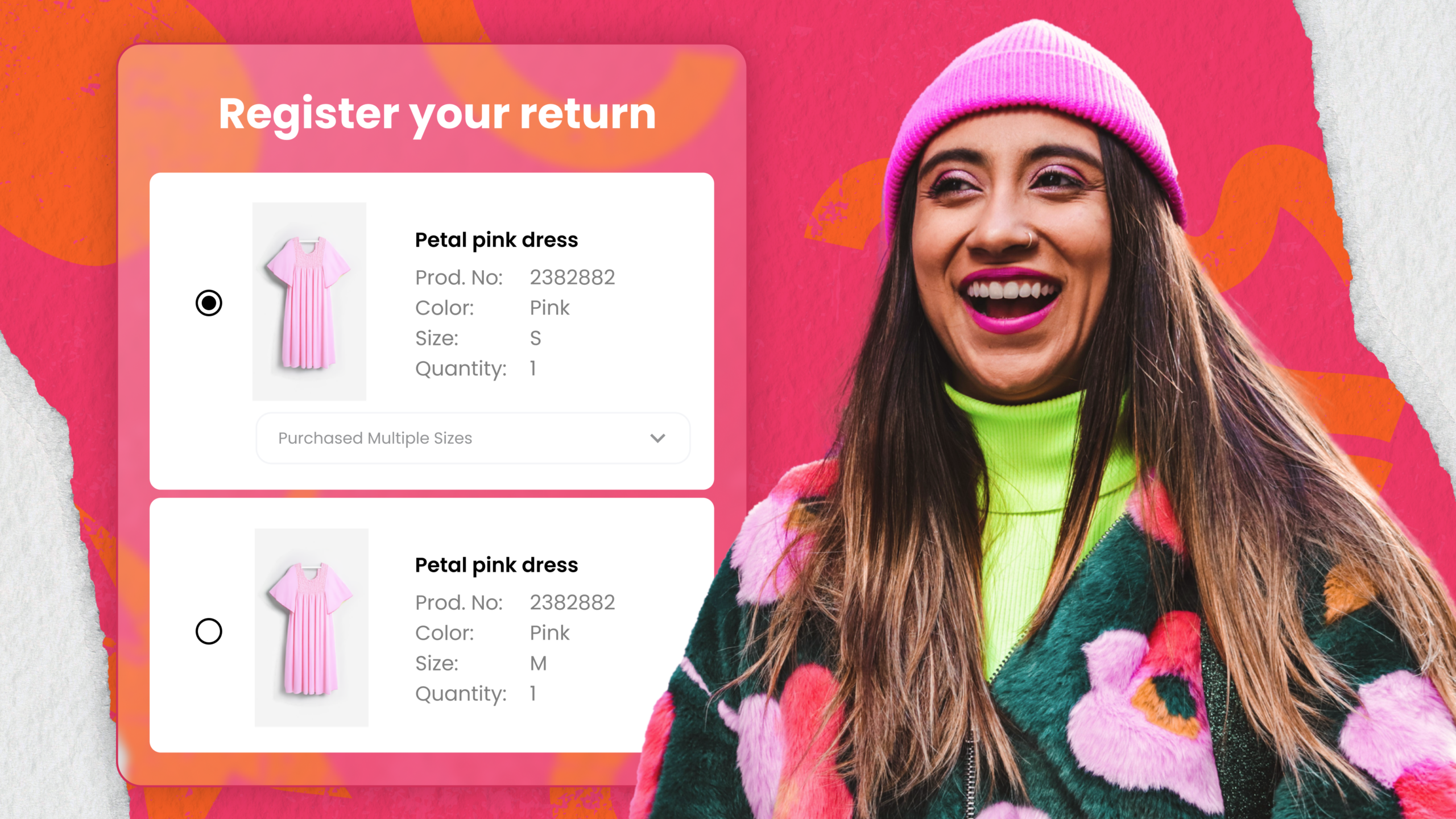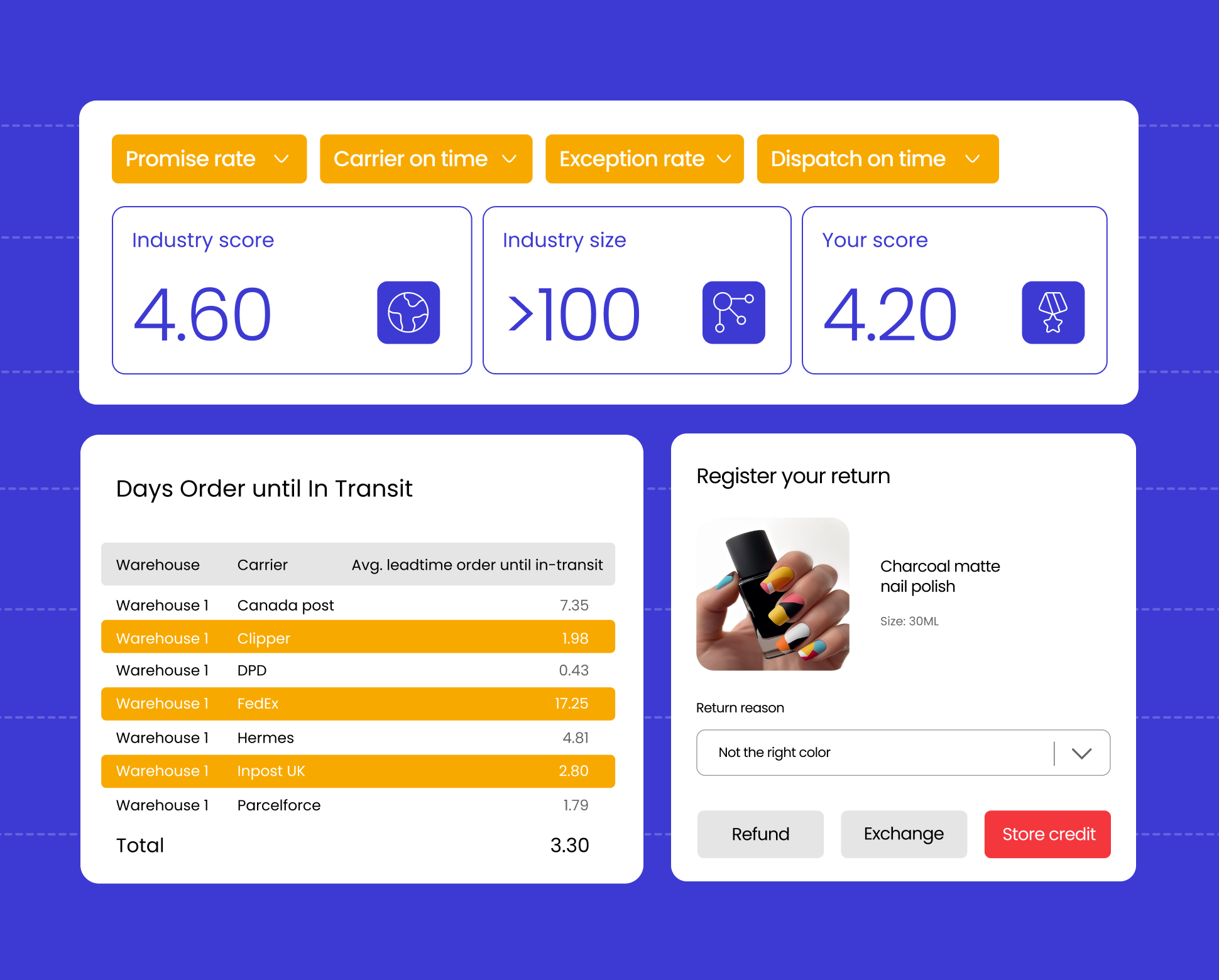Preventing returns: How retailers can tackle bracketing and fit issues

Contents
As more consumers prefer to shop online, retailers are seeing more returns due to bracketing. In fact, 67% of online shoppers are considered “serial returners,” meaning that these shoppers order multiple items with the intention of returning at least some of them. With returns costing retailers around $743 billion every year, this is not good for your bottom line or for sustainability practices.
In a highly attended webinar, parcelLab and Bold Metrics dove into the impact bracketing has on retailers and how to mitigate it. Let’s dive into the key points that were uncovered.
What is bracketing and how does it affect retailers?
Bracketing is when consumers order multiple sizes or versions of a product to try, and then return the ones they do not want. Most commonly, this happens in the apparel and footwear industries, especially when someone is a first-time customer.
75% of consumers say that sizes are inconsistent between brands. If your brand is relying on the “old-school” size charts to inform people of what size they need, you are more likely to see bracketing occur. According to a survey by Bold Metrics, 94% of customers consider figuring out their size online to be frustrating. In reality, most people don’t take their measurements before they buy an item as it is much easier to buy different sizes and return the ones that don’t fit.
So, how can you fix this?
Proactive sizing guidance to prevent returns

The key is to tackle the root cause — size uncertainty. AI-powered solutions can play a crucial role in addressing the bracketing problem. By providing accurate sizing recommendations and personalized product suggestions, retailers can help customers make more informed purchasing decisions and reduce the likelihood of returns.
For example, our partner, Bold Metrics, has a proven approach where they ask consumers to input their measurements such as age, height, and weight. They use those calculations along with AI to create a “digital twin” that will recommend the size that works best for you and how it will fit. According to Bold Metrics, retailers that use this approach see an 88% completion rate for the digital twin information.
How you can recover revenue when bracketing happens
Even with the best efforts to prevent bracketing returns, some will inevitably occur. To minimize revenue loss, it’s essential to offer a personalized returns experience that includes revenue protection tactics, like encouraging shoppers to consider exchanges or a store credit. By leveraging a returns experience management solution, retailers can also suggest alternative products or display targeted campaigns to entice customers to make additional purchases, reducing the financial impact of returns, and building customer loyalty.
Additionally, retailers can offer incentives to customers if they choose store credits instead of refunding their purchase back to their original payment method. parcelLab Retain, for example, empowers retailers to provide their customers with such options and the ability to flexibly set rules and customize the returns experience. We have seen customers offer a $5 voucher for selecting store credit which has proved to be extremely successful.
Balancing charging for returns and the customer experience

While it’s essential to take proactive measures to prevent bracketing returns, it’s equally important to have a well-defined returns policy in place. Many shoppers pay close attention to return policies, especially when making their first purchase. In fact, the poll we conducted during the webinar revealed that only 28% of retailers currently charge for returns, while 20% are considering implementing this strategy.
While charging for returns can be controversial, it can effectively deter bracketing behavior. A returns management platform can help you implement more nuanced rules, such as offering free returns for first-time customers or loyalty members, while charging for high-frequency or serial returners. This approach strikes a balance between reducing returns and maintaining a positive customer experience.
Ultimately, the decision to charge for returns depends on your brand’s specific goals and the type of customer experience you want to provide. By carefully considering the potential benefits and drawbacks, you can choose the strategy that best aligns with your business objectives.
From purchase to return: Building lasting relationships
To build lasting relationships with customers and drive bottom-line growth, retailers must provide exceptional experiences that set them apart from the competition. This starts before the purchase, with a simple and accurate way for shoppers to determine their size.
However, even the most advanced sizing technology can’t completely eliminate returns. That’s where a personalized post-purchase and returns experience comes into play. By offering customers options and control, you can enhance their relationship with your brand and minimize revenue loss.
Interested in diving deeper into the webinar for more insights? Watch the replay here.
Looking to improve your returns experience to recover revenue, increase customer loyalty, and win customers for life? Get in touch for a personalized returns demo.
Further Reading:



